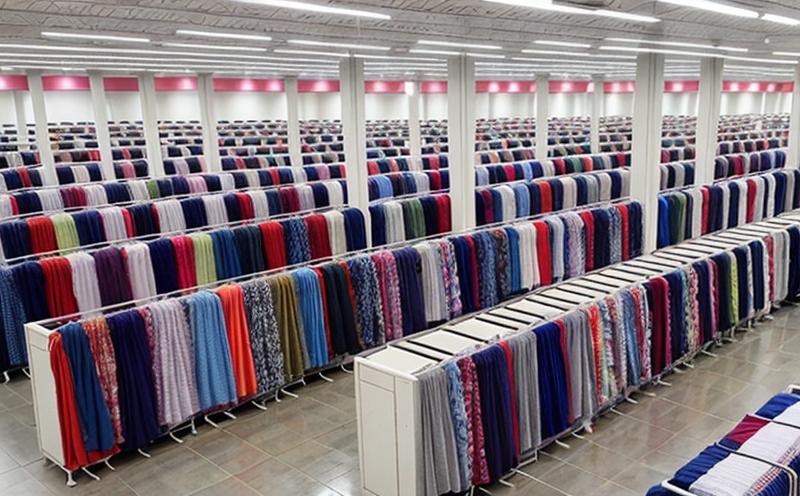ISO 3071 pH Value Testing of Textile Materials for Trade
The ISO 3071 standard specifies a method for determining the pH value of textile materials, which is crucial for ensuring that textiles meet international trade standards and consumer expectations. This testing is particularly important in sectors where fabric quality directly affects human health and environmental impact.
Textile materials used in clothing, home furnishings, and other products can come into prolonged contact with the skin or are exposed to various environmental conditions. The pH value of these fabrics plays a significant role in their potential for causing irritation or allergic reactions when worn by consumers. Consequently, manufacturers must ensure that their products meet stringent international standards like ISO 3071.
ISO 3071 provides clear guidelines on how to measure the pH level accurately using standard methods. This includes preparing specimens correctly according to specified dimensions and conditions before placing them into a solution for extraction. The extracted liquid is then analyzed precisely to determine its pH value.
The importance of this testing extends beyond mere compliance; it ensures product quality, enhances consumer satisfaction, and supports sustainable practices within the industry. By adhering to these standards, companies can confidently market their products globally while maintaining high levels of customer trust.
In practice, ISO 3071 pH value testing involves several key steps: selecting appropriate samples from production batches or finished goods; preparing those samples according to strict protocols; immersing them in distilled water for a set period; filtering out excess liquid; measuring the remaining solution's acidity or alkalinity using pH meters calibrated specifically for this purpose. These measurements form part of larger quality assurance programs designed to maintain consistent product performance across all stages of manufacturing.
The results from these tests are essential inputs into broader discussions about material selection, dyeing processes, finishing techniques, and labeling requirements. They help inform decisions regarding which raw materials should be sourced or how existing recipes need adjustment to achieve desired outcomes without compromising safety standards.
Applied Standards
| Standard Code | Description |
|---|---|
| ISO 3071:2018 | Method for determining the pH value of textile materials |
The testing described adheres strictly to ISO 3071, a widely recognized international standard that sets out precise procedures for measuring pH values in textiles. Compliance with this standard ensures consistency and reliability across different laboratories worldwide.
ISO 3071 specifies the use of distilled water as the extraction medium and defines the time required for soaking samples before analysis. It also provides recommendations on sample preparation, including cutting samples into strips or pieces if necessary to ensure accurate readings.
Scope and Methodology
| Step | Description |
|---|---|
| 1. Sample Preparation | Select representative samples from the batch or final product; cut into uniform strips if needed. |
| 2. Extraction | Immerse prepared samples in distilled water at room temperature for 30 minutes. |
| 3. Filtration | Filter the extracted liquid through a filter paper to remove any particulate matter. |
| 4. Measurement | Analyze the filtered liquid using a pH meter calibrated for textile applications. |
The methodology outlined in ISO 3071 ensures that each step is conducted under controlled conditions to minimize variability and ensure accurate results. This includes maintaining consistent temperature during extraction, using high-quality distilled water, and calibrating pH meters regularly.
By following these steps meticulously, laboratories can provide reliable data that helps manufacturers make informed decisions about material choices and processing methods. The standardized approach also facilitates easier comparison between different batches or products over time.
Environmental and Sustainability Contributions
- The use of distilled water in the extraction process reduces the risk of introducing impurities from other sources into the sample.
- Calibration of pH meters ensures accurate measurements, which is crucial for minimizing waste during production processes.
- Consistent application of ISO 3071 helps reduce variability between batches, leading to more efficient resource utilization throughout supply chains.
Incorporating ISO 3071 pH value testing into quality control protocols supports sustainable practices by promoting consistency and reducing errors. This leads to improved product performance while minimizing environmental impact through optimized production processes.





